Junyan Cao
Diverse Image Harmonization
Jul 22, 2024Abstract:Image harmonization aims to adjust the foreground illumination in a composite image to make it harmonious. The existing harmonization methods can only produce one deterministic result for a composite image, ignoring that a composite image could have multiple plausible harmonization results due to multiple plausible reflectances. In this work, we first propose a reflectance-guided harmonization network, which can achieve better performance with the guidance of ground-truth foreground reflectance. Then, we also design a diverse reflectance generation network to predict multiple plausible foreground reflectances, leading to multiple plausible harmonization results. The extensive experiments on the benchmark datasets demonstrate the effectiveness of our method.
Progressive Painterly Image Harmonization from Low-level Styles to High-level Styles
Dec 15, 2023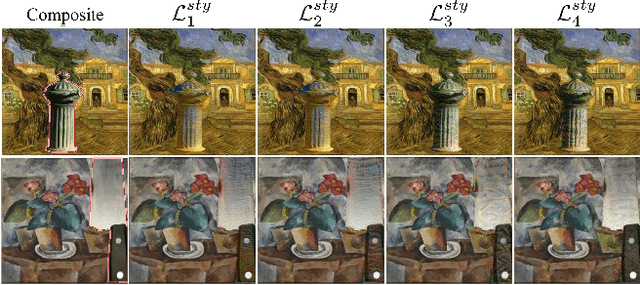
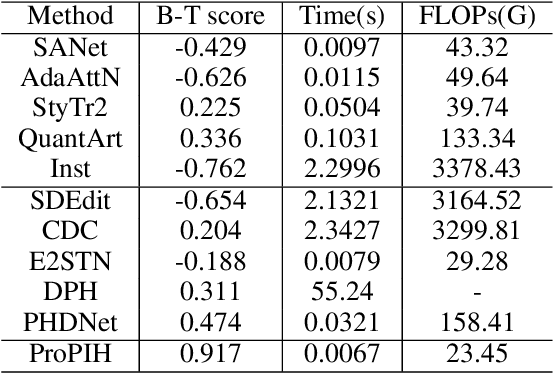
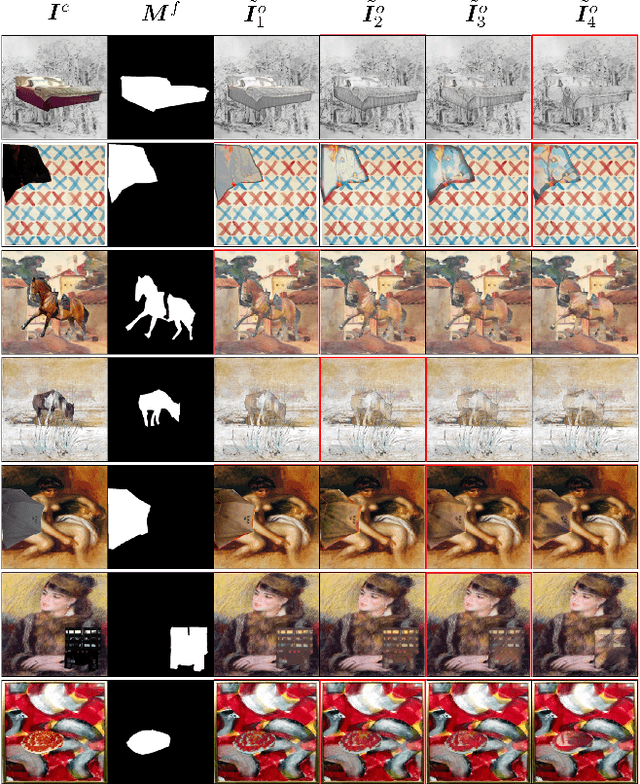
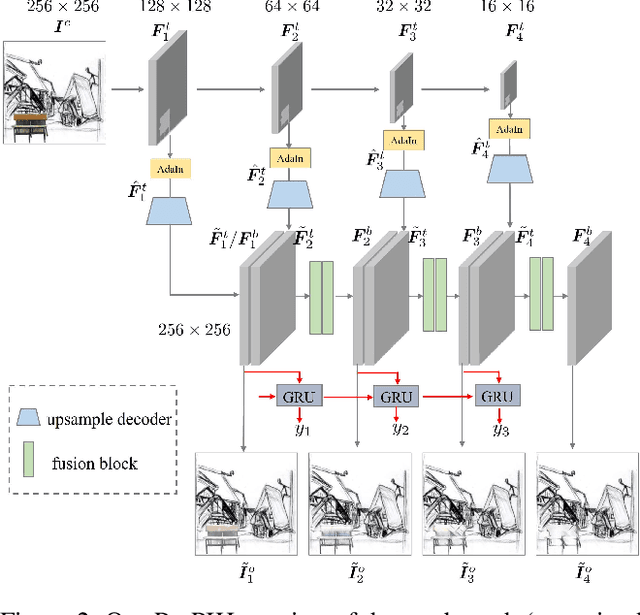
Abstract:Painterly image harmonization aims to harmonize a photographic foreground object on the painterly background. Different from previous auto-encoder based harmonization networks, we develop a progressive multi-stage harmonization network, which harmonizes the composite foreground from low-level styles (e.g., color, simple texture) to high-level styles (e.g., complex texture). Our network has better interpretability and harmonization performance. Moreover, we design an early-exit strategy to automatically decide the proper stage to exit, which can skip the unnecessary and even harmful late stages. Extensive experiments on the benchmark dataset demonstrate the effectiveness of our progressive harmonization network.
Painterly Image Harmonization by Learning from Painterly Objects
Dec 15, 2023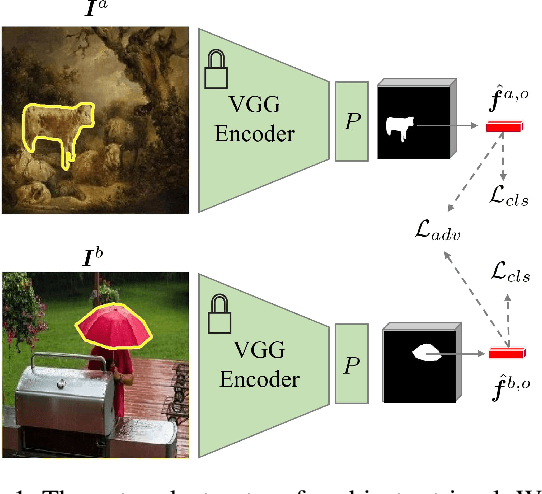
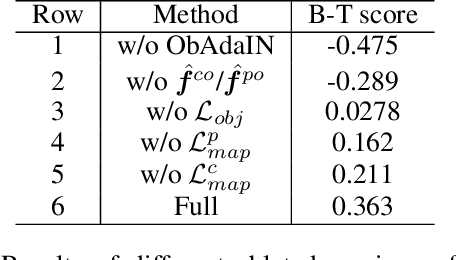


Abstract:Given a composite image with photographic object and painterly background, painterly image harmonization targets at stylizing the composite object to be compatible with the background. Despite the competitive performance of existing painterly harmonization works, they did not fully leverage the painterly objects in artistic paintings. In this work, we explore learning from painterly objects for painterly image harmonization. In particular, we learn a mapping from background style and object information to object style based on painterly objects in artistic paintings. With the learnt mapping, we can hallucinate the target style of composite object, which is used to harmonize encoder feature maps to produce the harmonized image. Extensive experiments on the benchmark dataset demonstrate the effectiveness of our proposed method.
Painterly Image Harmonization via Adversarial Residual Learning
Nov 15, 2023
Abstract:Image compositing plays a vital role in photo editing. After inserting a foreground object into another background image, the composite image may look unnatural and inharmonious. When the foreground is photorealistic and the background is an artistic painting, painterly image harmonization aims to transfer the style of background painting to the foreground object, which is a challenging task due to the large domain gap between foreground and background. In this work, we employ adversarial learning to bridge the domain gap between foreground feature map and background feature map. Specifically, we design a dual-encoder generator, in which the residual encoder produces the residual features added to the foreground feature map from main encoder. Then, a pixel-wise discriminator plays against the generator, encouraging the refined foreground feature map to be indistinguishable from background feature map. Extensive experiments demonstrate that our method could achieve more harmonious and visually appealing results than previous methods.
Painterly Image Harmonization using Diffusion Model
Aug 04, 2023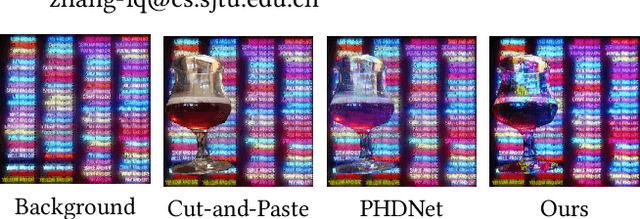
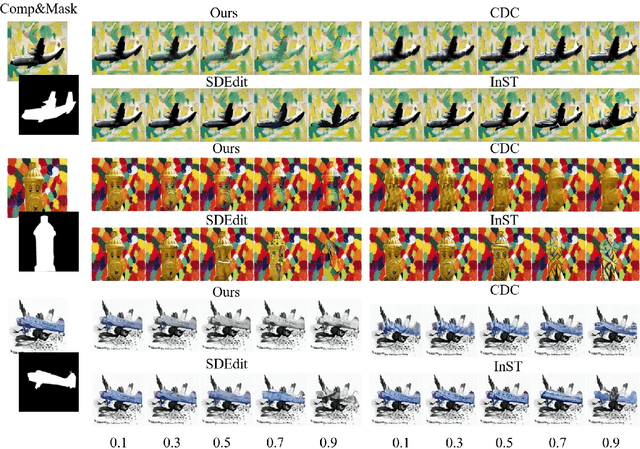
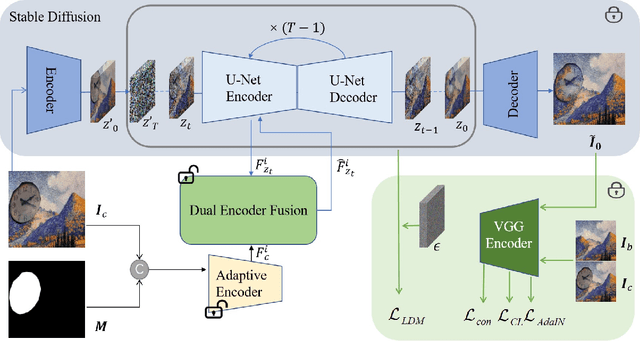
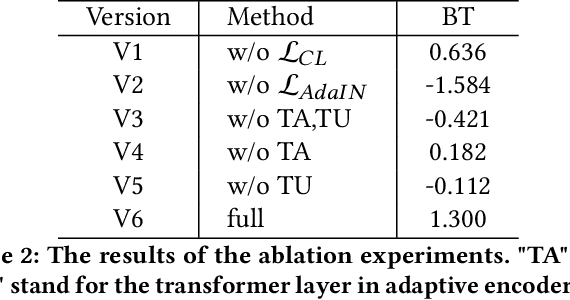
Abstract:Painterly image harmonization aims to insert photographic objects into paintings and obtain artistically coherent composite images. Previous methods for this task mainly rely on inference optimization or generative adversarial network, but they are either very time-consuming or struggling at fine control of the foreground objects (e.g., texture and content details). To address these issues, we propose a novel Painterly Harmonization stable Diffusion model (PHDiffusion), which includes a lightweight adaptive encoder and a Dual Encoder Fusion (DEF) module. Specifically, the adaptive encoder and the DEF module first stylize foreground features within each encoder. Then, the stylized foreground features from both encoders are combined to guide the harmonization process. During training, besides the noise loss in diffusion model, we additionally employ content loss and two style losses, i.e., AdaIN style loss and contrastive style loss, aiming to balance the trade-off between style migration and content preservation. Compared with the state-of-the-art models from related fields, our PHDiffusion can stylize the foreground more sufficiently and simultaneously retain finer content. Our code and model are available at https://github.com/bcmi/PHDiffusion-Painterly-Image-Harmonization.
Deep Image Harmonization with Globally Guided Feature Transformation and Relation Distillation
Aug 01, 2023



Abstract:Given a composite image, image harmonization aims to adjust the foreground illumination to be consistent with background. Previous methods have explored transforming foreground features to achieve competitive performance. In this work, we show that using global information to guide foreground feature transformation could achieve significant improvement. Besides, we propose to transfer the foreground-background relation from real images to composite images, which can provide intermediate supervision for the transformed encoder features. Additionally, considering the drawbacks of existing harmonization datasets, we also contribute a ccHarmony dataset which simulates the natural illumination variation. Extensive experiments on iHarmony4 and our contributed dataset demonstrate the superiority of our method. Our ccHarmony dataset is released at https://github.com/bcmi/Image-Harmonization-Dataset-ccHarmony.
Deep Image Harmonization with Learnable Augmentation
Aug 01, 2023



Abstract:The goal of image harmonization is adjusting the foreground appearance in a composite image to make the whole image harmonious. To construct paired training images, existing datasets adopt different ways to adjust the illumination statistics of foregrounds of real images to produce synthetic composite images. However, different datasets have considerable domain gap and the performances on small-scale datasets are limited by insufficient training data. In this work, we explore learnable augmentation to enrich the illumination diversity of small-scale datasets for better harmonization performance. In particular, our designed SYthetic COmposite Network (SycoNet) takes in a real image with foreground mask and a random vector to learn suitable color transformation, which is applied to the foreground of this real image to produce a synthetic composite image. Comprehensive experiments demonstrate the effectiveness of our proposed learnable augmentation for image harmonization. The code of SycoNet is released at https://github.com/bcmi/SycoNet-Adaptive-Image-Harmonization.
RdSOBA: Rendered Shadow-Object Association Dataset
Jun 30, 2023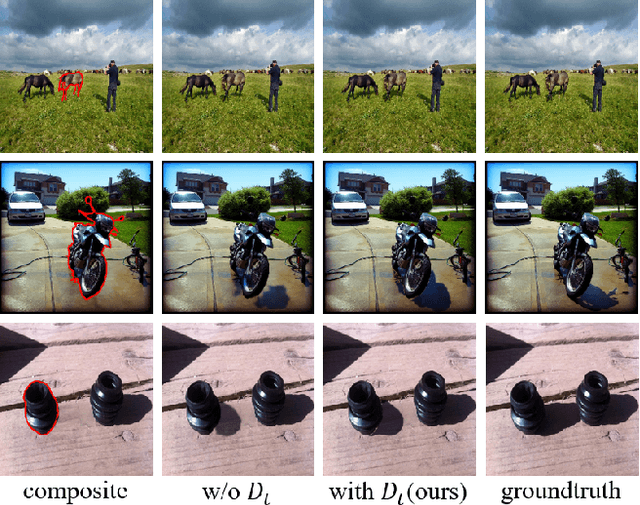

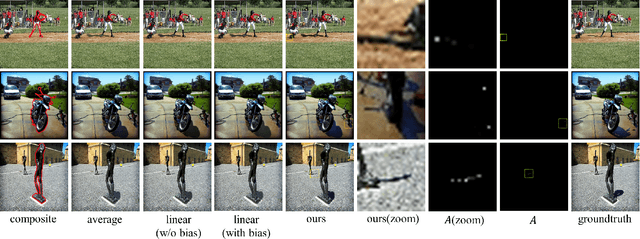

Abstract:Image composition refers to inserting a foreground object into a background image to obtain a composite image. In this work, we focus on generating plausible shadows for the inserted foreground object to make the composite image more realistic. To supplement the existing small-scale dataset DESOBA, we created a large-scale dataset called RdSOBA with 3D rendering techniques. Specifically, we place a group of 3D objects in the 3D scene, and get the images without or with object shadows using controllable rendering techniques. Dataset is available at https://github.com/bcmi/Rendered-Shadow-Generation-Dataset-RdSOBA.
Painterly Image Harmonization in Dual Domains
Dec 20, 2022



Abstract:Image harmonization aims to produce visually harmonious composite images by adjusting the foreground appearance to be compatible with the background. When the composite image has photographic foreground and painterly background, the task is called painterly image harmonization. There are only few works on this task, which are either time-consuming or weak in generating well-harmonized results. In this work, we propose a novel painterly harmonization network consisting of a dual-domain generator and a dual-domain discriminator, which harmonizes the composite image in both spatial domain and frequency domain. The dual-domain generator performs harmonization by using AdaIn modules in the spatial domain and our proposed ResFFT modules in the frequency domain. The dual-domain discriminator attempts to distinguish the inharmonious patches based on the spatial feature and frequency feature of each patch, which can enhance the ability of generator in an adversarial manner. Extensive experiments on the benchmark dataset show the effectiveness of our method. Our code and model are available at https://github.com/bcmi/PHDNet-Painterly-Image-Harmonization.
Deep Image Harmonization by Bridging the Reality Gap
Mar 31, 2021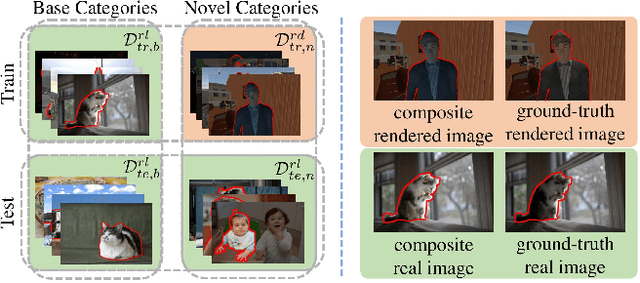
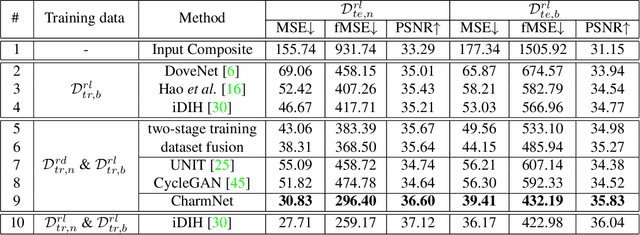
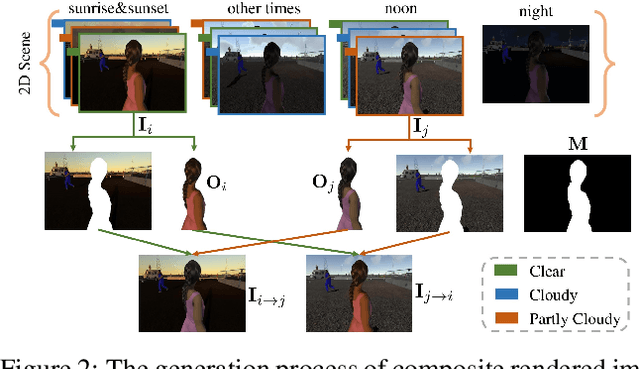
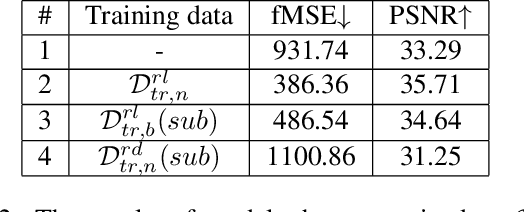
Abstract:Image harmonization has been significantly advanced with large-scale harmonization dataset. However, the current way to build dataset is still labor-intensive, which adversely affects the extendability of dataset. To address this problem, we propose to construct a large-scale rendered harmonization dataset RHHarmony with fewer human efforts to augment the existing real-world dataset. To leverage both real-world images and rendered images, we propose a cross-domain harmonization network CharmNet to bridge the domain gap between two domains. Moreover, we also employ well-designed style classifiers and losses to facilitate cross-domain knowledge transfer. Extensive experiments demonstrate the potential of using rendered images for image harmonization and the effectiveness of our proposed network. Our dataset and code are available at https://github.com/bcmi/Rendered_Image_Harmonization_Datasets.
 Add to Chrome
Add to Chrome Add to Firefox
Add to Firefox Add to Edge
Add to Edge